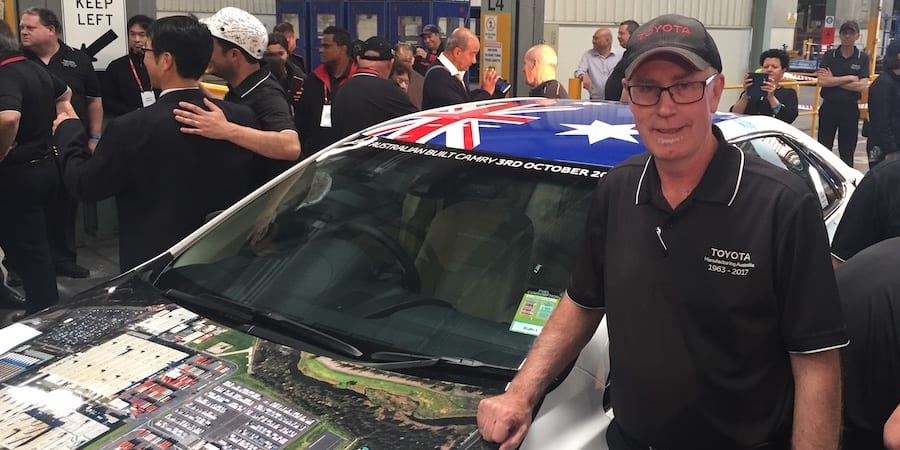
Transforming the lives of young Californians with coaching
INTERVIEW – An organization in the San Francisco Bay Area is using coaching to increase its impact on the lives of foster youth. We had a chat with an extraordinary group of women to learn how they are doing it.
Interviewees: Antonia Jackson, Director of Coaching and Talent Management, Angely Miranda, Transition Services Coordinator/Sr. Coach; Kamela Stewart, Community Housing Coordinator/Sr. Coach; Paula Buck, Operations and HR Manager/Sr. Coach; and Alison Traina, Coach/Consultant, at Beyond Emancipation.
Roberto Priolo: What does Beyond Emancipation do?
Antonia Jackson: We are a multi-service organization that operates in Alameda County in the San Francisco Bay Area. Each year, we provide support to over 1,000 foster care and probation youth emancipating from the child welfare system. We serve youth between the ages of 14-24 in 5 areas: education, employment, and transitional housing services, permanency (building positive and permanent connections) and wellness. Our purpose is for our youth here to live healthy, productive and connected lives and to have sustained success beyond our programs and services.
RP: Could you give us a couple of examples of what your work entails?
Angely Miranda: Part of my job is to case manage non-minor dependents (NMDs), former foster youth who opted to stay in foster care between the ages of 18 and 21 – something made possible by the Assembly Bill 12 (AB12) passed five years ago in California. To retain access to government funding and support, NMDs need to meet certain requirements: for instance, they have to be going to school or work a minimum of 80 hours a month, meet with their Social Worker once a month, and attend a court hearing every six months to ensure they are in compliance. What I do is provide NMDs with support to ensure they meet requirements, so that they remain connected to the funding (which goes towards transportation, books or uniforms, for example) and services (case management, coaching, etc) so they can eventually become independent.
Kamela Stewart: I do all the case management and coaching for B:E clients who live in our housing program (we are one of six collaborative partners of the Next Steps Collaborative in Alameda County, providing housing for youth between 18 and 24). Many of them have never lived outside the system, which means that dealing with roommate conflicts or even washing clothes are skills they need to be taught. We equip them with the skills and tools they need to live independently.
RP: Your approach has a strong focus on coaching. How would you say it has evolved over time as circumstances changed or you simply learned more about the problem at hand?
AJ: A longitudinal study was conducted by the University of Chicago from 2002 to 2009 with American emancipated foster youth, which revealed many of the dismal outcomes they were experiencing: only 3% had a four-year college degree or higher. Over a third of the youth surveyed had not maintained any positive relationship with any caring adult since they were 14 years old. With many of our youth experiencing long-term homelessness and unemployment (or worse, being unemployable) since exiting the foster care system, we at Beyond Emancipation felt we weren’t doing enough. We were being effective while young people were with us in the program and receiving direct services. But as soon as our youth exited our programs, things went south.
It’s not a coincidence that our coaching journey started around that same year: our organizational leaders saw coaching as a way for us to offer a wider and more comprehensive range of services and commit to the intensive work our clients actually needed us to do. We realized that we had no hope of having a long-term impact without applying coaching to our direct social service work with our clients. Our coaching model is trauma informed and rooted in positive youth development theory. It provides our young people with information, skills, and supports so that they can be fully involved partners and participate meaningfully in their own planning and decision-making. Coaching was our way to make our programs more focused on building permanent relationships, youth development, skill-building and supporting youth in managing crisis, which proved extremely beneficial – especially in a high stakes environment like ours, where many of our clients have seen their relationships dismantled and need to re-learn their social skills.
Before long, we came to the conclusion that we needed coaching internally as well as externally – how could we expect our team to give clients what they needed otherwise? This was easier said than done, however, as we met quite a bit of resistance to coaching at first.
AM: Absolutely! I was thrown into coaching my first week on the job, and it felt incredibly invasive. I felt vulnerable and uncomfortable. I was very reluctant. If I found it hard, I thought, how could they expect the youth to enjoy it or even be open to coaching (considering their traumatic backgrounds)?! I managed to keep an open mind, however, and over time I eventually started to see what coaching can do in the professional and personal life of an individual.
Coaching caused a massive shift at Beyond Emancipation, as it turned our work from transactional into transformational. It wasn't about getting youth a bus pass or a place to live; it was about creating a meaningful relationship with people who don’t have relationships in their lives and who tend to not trust anyone. So, we started to talk to them differently, and to really get to know them and their emotions. Understanding them and their way of thinking became instrumental to figuring out how to best help them to achieve their goals. We learned that our work at B:E is less about doing things for them and more about them doing things for themselves. It’s about empowering people, and I know this is something that really resonates with lean folks.
KS: At first, it was very hard not to give advice. I didn’t understand how I could help someone if I couldn’t tell them what to do. Coaching taught us that the person closest to the problem is the person closest to the solution: that’s why we no longer try to solve problems for our clients, putting them in the driver’s seat instead.
RP: CCRW, which stands for Creative Connected Resourceful and Whole, seems to be a key part of your coaching approach. Can you tell me about it?
Paula Buck: CCRW, which was introduced in 2013, aims to empower youth, help them create inner resiliency and develop lasting connections in their communities. It is this framework that allowed us to go from transactional to transformational: its tools are used to teach our staff and to coach our clients. We have even established a coaching clinic to practice them for two hours each month.
CCRW really permeates everything we do. For example, it has become a big part of the recruiting and onboarding processes – finding the right people and ensuring they are equipped with the right tools from day one is critical. Indeed, it’s great to see how the idea of “transactional to transformational” applies to our staff as much as it does to our youth: thanks to CCRW, we have gone from simply doing our day-to-day work to actually looking at the big picture more strategically.
Alison Traina [RP1] : Coaching empowers people, both on the job and in interactions with peers. In their work, it helps them to identify their needs and advocate for them with their employers (this is a giant step for people who have never had a say before); in the rest of their lives, it encourages them to open up to relationships. An example is our regular coaching sessions, which quickly became a powerful place for transformation, where people routinely coach one another.
AM: Another example of how our approach at B:E evolved is our SILP (Supervised Independent Living Program) Readiness Program, now called Living On My Own, which is a series of workshops that offer a range of topics that will help youth develop the skills essential for independent living, sustainability and permanence. For example, the workshops help foster & former foster youth to keep their placement (many youth fail to pay rent on time or because they have fallen out with their roommate, they lose their placement). Not only do we teach them skills (like financial literacy), but since introducing coaching elements in the program we have begun to work to understand our client’s feelings and thoughts about living on their own. Understanding them as people is different than just serving them as clients.
RP: In your opinion, what makes coaching different and, ultimately, so much more effective?
AJ: Through coaching, we can infuse the voice of our youth in the work we do, to try and establish a peer relationship with them. Asking them what they want from their lives is an amazing thing to do, because our young people are often not allowed to use their voice. We use coaching to help them make decisions for themselves, which in turn builds their confidence.
What our coaching model does is slow down the reaction process, focusing on thoughtful and creative problem solving and decision making. The best part is that it’s applicable in any environment, which makes it possible to ultimately shift the whole youth services sector towards coaching. It’s the only way we have to achieve life-changing, sustainable outcomes for our young people.
RP: What, if anything, do you borrow from lean thinking?
PB: We see a lot of similarities between lean principles and the CCRW approach. We certainly draw inspiration from ideas like continuous improvement and seeing people at the front line – not the managers – as the experts. In fact, the more we learn about lean, the more similarities we see… and the more we want it to inform our approach. The end result is becoming a learning organization.
THE INTERVIEWEES

From left to right, the Emancipation Team who participated in this interview: Antonia Jackson, Director of Coaching and Talent Management; Angely Miranda, Transition Services Coordinator and Senior Coach; Kamela Stewart, Community Housing Coordinator and Senior Coach; Paula Buck, Operations and HR Manager and Senior Coach; and Alison Train, Coach and Consultant.
Read more


FEATURE – The introduction of a new process can be disruptive to an organization’s improvement efforts. But what if the process were designed to be lean from the start?


FEATURE – A lean management system is necessary to effectively run a business. Can Art Smalley’s four types of problems framework help such a system to focus on what’s really important?


PROFILE – What does one learn from working for Toyota over 40 years? This Australian leader has developed a unique holistic view, and a strong set of technical and social skills.


CASE STUDY – This Turkish producer of sanitaryware has boosted its quality so dramatically it’s now a player in the German market. It did so by bringing drastic change to its production system.

